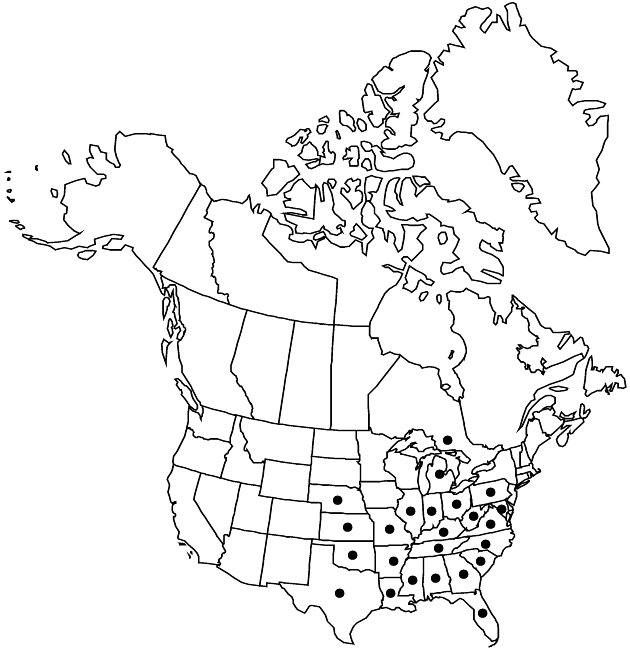Difference between revisions of "Vernonia gigantea"
Rep. (Annual) Arkansas Geol. Surv. 4: 189. 1891.
FNA>Volume Importer |
FNA>Volume Importer |
(No difference)
| |
Revision as of 18:36, 24 September 2019
Plants 8–20(–30+) dm. Stems puberulent, glabrescent. Leaves mostly cauline; blades ± lanceolate, 12–25+ cm × 20–60+ mm, l/w = (3.5–)4–7+, abaxially scabrellous (hairs awl-shaped), sometimes glabrescent, not or sparsely resin-gland-dotted, adaxially strigillose, glabrescent, not resin-gland-dotted. Heads in corymbiform-scorpioid arrays. Peduncles 1–12(–20+) mm. Involucres broadly campanulate to hemispheric, 4–5+ × 4–5 mm. Phyllaries 30–40+ in 4–5 series, glabrate, margins ciliolate, the outer lance-ovate, 1–2 mm, inner oblong, 3.5–5 mm, tips acute or rounded-apiculate. Florets (9–)18–24(–30). Cypselae 2.5–3.5 mm; pappi usually purplish, sometimes stramineous, outer scales 20–25, 0.5–1 mm, contrasting with 35–40+, 4.5–6+ mm inner bristles. 2n = 34.
Phenology: Flowering Jun–Sep.
Habitat: Flood plains
Elevation: 10–300 m
Distribution

Ont., Ala., Ark., Fla., Ga., Ill., Ind., Kans., Ky., La., Md., Mich., Miss., Mo., Nebr., N.C., Ohio, Okla., Pa., S.C., Tenn., Tex., Va., W.Va.
Discussion
Selected References
None.